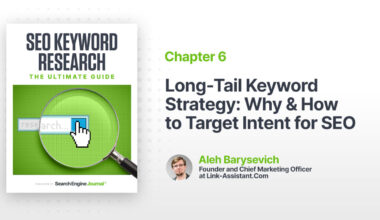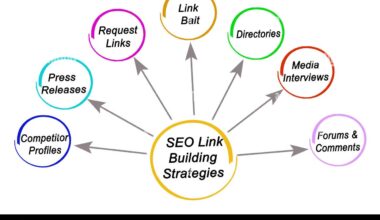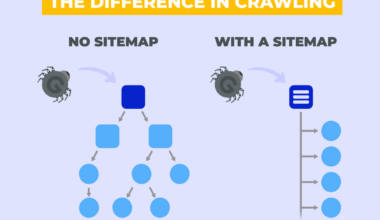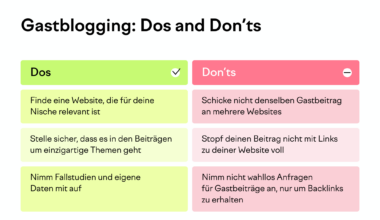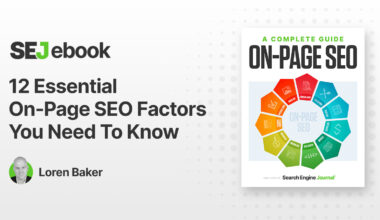Introduction to SEO Optimization
As a website owner, you want to make sure that your website is visible to as many people as possible. One way to achieve this is through search engine optimization (SEO). SEO is the process of improving your website’s ranking on search engine results pages (SERPs) by optimizing your website’s content and structure.
When someone types a query into a search engine like Google, the search engine uses complex algorithms to determine which pages to show in the results. SEO helps you improve your website’s ranking in those results, making it more likely that people will find and visit your website.
SEO optimization involves a variety of techniques, including researching and selecting keywords, creating quality content, and optimizing your website’s structure and metadata.
By optimizing your website for SEO, you can increase your website’s visibility, attract more traffic, and ultimately, increase your revenue. In the following sections, we will delve deeper into the specific techniques that can help you optimize your website for SEO.
Researching and Selecting Keywords
Keywords are the foundation of SEO. They are the words and phrases that people type into search engines when they are looking for information or products on the internet. Researching and selecting the right keywords is essential for optimizing your website for SEO.
To start with, you need to research the keywords that are relevant to your website and your target audience. You can use various tools such as Google Keyword Planner, SEMrush, Ahrefs, and Moz Keyword Explorer to find relevant keywords. These tools will give you an idea of the search volume and competition level for each keyword.
Once you have a list of potential keywords, you need to narrow it down to the most relevant and high-traffic keywords. You can use the following criteria to select the best keywords:
- Relevance: Choose keywords that are relevant to your website’s content and your target audience.
- Search volume: Choose keywords that have a high search volume to attract more traffic to your website.
- Competition level: Choose keywords that have a low competition level to increase your chances of ranking higher in search engine results.
It’s important to note that you should avoid using too many keywords on your website, as this can be seen as spamming by search engines and can result in a penalty. Instead, focus on using your selected keywords strategically in your website’s content and structure.
In addition to traditional keywords, you should also consider using long-tail keywords. These are longer, more specific phrases that people use to search for information or products. Long-tail keywords tend to have lower competition levels and can help you attract more targeted traffic to your website.
In conclusion, researching and selecting the right keywords is critical to optimizing your website for SEO. By choosing relevant and high-traffic keywords and using them strategically throughout your website’s content and structure, you can increase your website’s visibility and attract more traffic.
Creating Quality Content
Creating quality content is crucial to optimizing your website for SEO. Search engines prioritize websites that offer valuable and relevant content to users. Quality content can also increase user engagement and encourage visitors to spend more time on your website, which can improve your website’s ranking on search engine results pages.
To create quality content, you need to focus on the following aspects:
- Relevance: Your content should be relevant to your website’s niche and target audience. It should offer valuable information or insights that users are searching for.
- Originality: Your content should be unique and original. Avoid copying content from other websites, as this can result in a penalty from search engines.
- Readability: Your content should be easy to read and understand. Use short paragraphs, subheadings, and bullet points to break up the content and make it more readable.
- Visuals: Including visuals such as images, videos, and infographics can make your content more engaging and attractive to users.
When creating content, focus on providing value to your users rather than trying to stuff keywords into your content. Use your selected keywords strategically in your content, such as in the title, meta description, and headers, but avoid overusing them.
It’s also important to keep your content fresh and up-to-date. Regularly updating your website with new content can help improve your website’s ranking on search engine results pages.
In addition to written content, you can also optimize other types of content on your website, such as images and videos. Use descriptive file names and alt tags for images to make them more accessible to search engines. Add transcripts and captions to videos to make them more user-friendly and accessible.
In conclusion, creating quality content is essential to optimizing your website for SEO. By focusing on relevance, originality, readability, and visuals, you can create content that is valuable to your users and attractive to search engines. Regularly updating your website with fresh and relevant content can also help improve your website’s ranking on search engine results pages.
On-Page Optimization Techniques
On-page optimization refers to the techniques you can use to optimize individual pages on your website for SEO. These techniques can help search engines understand the content and structure of your website, making it easier for them to rank your website higher in search engine results pages.
Here are some on-page optimization techniques you can use to optimize your website for SEO:
- Title tags: The title tag is the text that appears at the top of your browser window. It should include your selected keywords and be descriptive of the page’s content.
- Meta descriptions: The meta description is the short summary of the page’s content that appears in search engine results pages. It should be concise, informative, and include your selected keywords.
- Header tags: Header tags (H1, H2, H3, etc.) are used to indicate the headings and subheadings of your content. They make it easier for search engines to understand the structure of your content and should include your selected keywords.
- URL structure: Your website’s URLs should be descriptive of the page’s content and include your selected keywords. Avoid using numbers or random characters in your URLs.
- Internal linking: Internal linking refers to linking to other pages on your website within your content. This can help search engines understand the structure of your website and improve user navigation.
- Image optimization: Optimizing your images can help improve your website’s loading speed and make them more accessible to search engines. Use descriptive file names and alt tags for your images.
- Mobile optimization: With more people accessing the internet on their mobile devices, it’s essential to optimize your website for mobile devices. Use a responsive design that adjusts to different screen sizes and optimize your website’s loading speed.
It’s important to note that while on-page optimization can help improve your website’s ranking on search engine results pages, it’s not the only factor that search engines use to rank websites. Off-page factors such as backlinks and social signals also play a significant role in SEO.
In conclusion, on-page optimization techniques can help improve your website’s ranking on search engine results pages and make it easier for search engines to understand the content and structure of your website. By using techniques such as title tags,
Final Thought
Optimizing your website for SEO is an ongoing process that requires patience and dedication. While it can take time to see results, the benefits of SEO optimization are well worth the effort. By following the techniques outlined in this article, you can improve your website’s visibility, attract more traffic, and ultimately, increase your revenue.
In addition to the techniques mentioned in this article, it’s also important to stay up-to-date with the latest SEO trends and best practices. Search engines are constantly updating their algorithms, and what worked yesterday may not work today. By staying informed and adapting your SEO strategy accordingly, you can stay ahead of the game and continue to improve your website’s ranking on search engine results pages.
Remember, SEO optimization is not a one-time task but an ongoing process. Regularly updating your website with fresh and relevant content, optimizing your website’s structure and metadata, and staying informed about the latest SEO trends are all essential to maintaining your website’s visibility and attracting more traffic.
In conclusion, optimizing your website for SEO is a critical aspect of online marketing. By investing time and effort into SEO optimization, you can improve your website’s visibility, attract more traffic, and ultimately, increase your revenue. So, start implementing these techniques today and watch your website climb up the search engine results pages!













